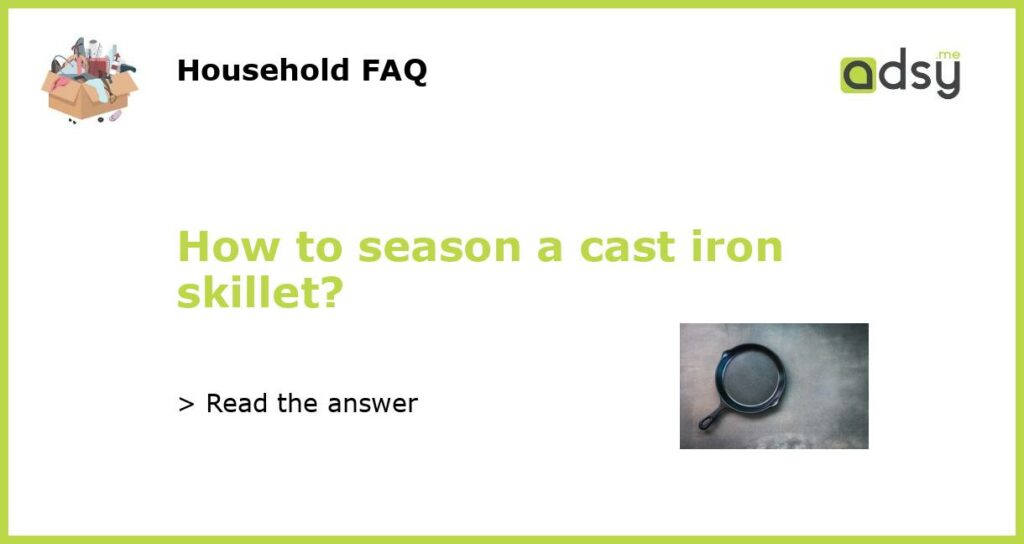Why Seasoning a Cast Iron Skillet is Important
Seasoning a cast iron skillet is the key to creating a non-stick cooking surface and preventing rust. When you season a cast iron skillet, you are essentially creating a layer of polymerized oil that provides a natural non-stick coating. This seasoning layer also helps to protect the skillet from moisture and prevents it from rusting. So, whether you have just purchased a new cast iron skillet or want to revive an old one, learning how to season it properly is essential.
Gather Your Supplies
Before you start the seasoning process, gather all the supplies you will need. Here is a list of what you will need:
- Cast iron skillet
- Vegetable oil or flaxseed oil
- Paper towels or a clean cloth
- Aluminum foil
- An oven
Make sure your cast iron skillet is clean and dry before you begin the seasoning process.
Preparing and Applying the Oil
To season your cast iron skillet, start by preheating your oven to 375°F (190°C). While the oven is heating, apply a thin layer of vegetable oil or flaxseed oil to all surfaces of the skillet, including the handle. Make sure to use a paper towel or cloth to spread the oil evenly and remove any excess oil. The oil should cover the entire skillet with a thin, even layer.
After applying the oil, place the skillet upside down on the middle rack of the oven. This will allow any excess oil to drip off and prevent pooling. To catch any drips, place a sheet of aluminum foil on the lower rack.
Baking and Cooling the Skillet
Bake the skillet in the preheated oven for one hour. This will allow the oil to bind with the surface of the skillet and create the desired non-stick coating. After one hour, turn off the oven and let the skillet cool completely inside the oven. Do not remove the skillet from the oven until it has cooled down. This gradual cooling process helps to further strengthen the seasoning layer.
Once the skillet has cooled down, it is ready to use. However, it is recommended to repeat the seasoning process a few more times to build up a stronger seasoning layer. Each time you season the skillet, the non-stick properties will improve, making it easier to cook with and clean.
Maintaining the Seasoning
To maintain the seasoning of your cast iron skillet, it is important to clean it properly after each use. Avoid using soap or abrasive materials, as they can strip away the seasoning. Instead, use hot water and a non-abrasive sponge to gently clean the skillet. If there are any stubborn stuck-on food particles, you can use a small amount of salt as a gentle scrubbing agent.
After cleaning, make sure to dry the skillet thoroughly to prevent rust. You can either air dry it or place it on a stove burner over low heat to evaporate any remaining moisture. Once dry, you can lightly coat the skillet with a thin layer of oil to help maintain the seasoning.
With proper care and maintenance, your cast iron skillet will continue to improve with each use. Whether you are searing steaks, frying eggs, or baking cornbread, a well-seasoned cast iron skillet will provide you with excellent cooking results and a durable, long-lasting kitchen tool.






